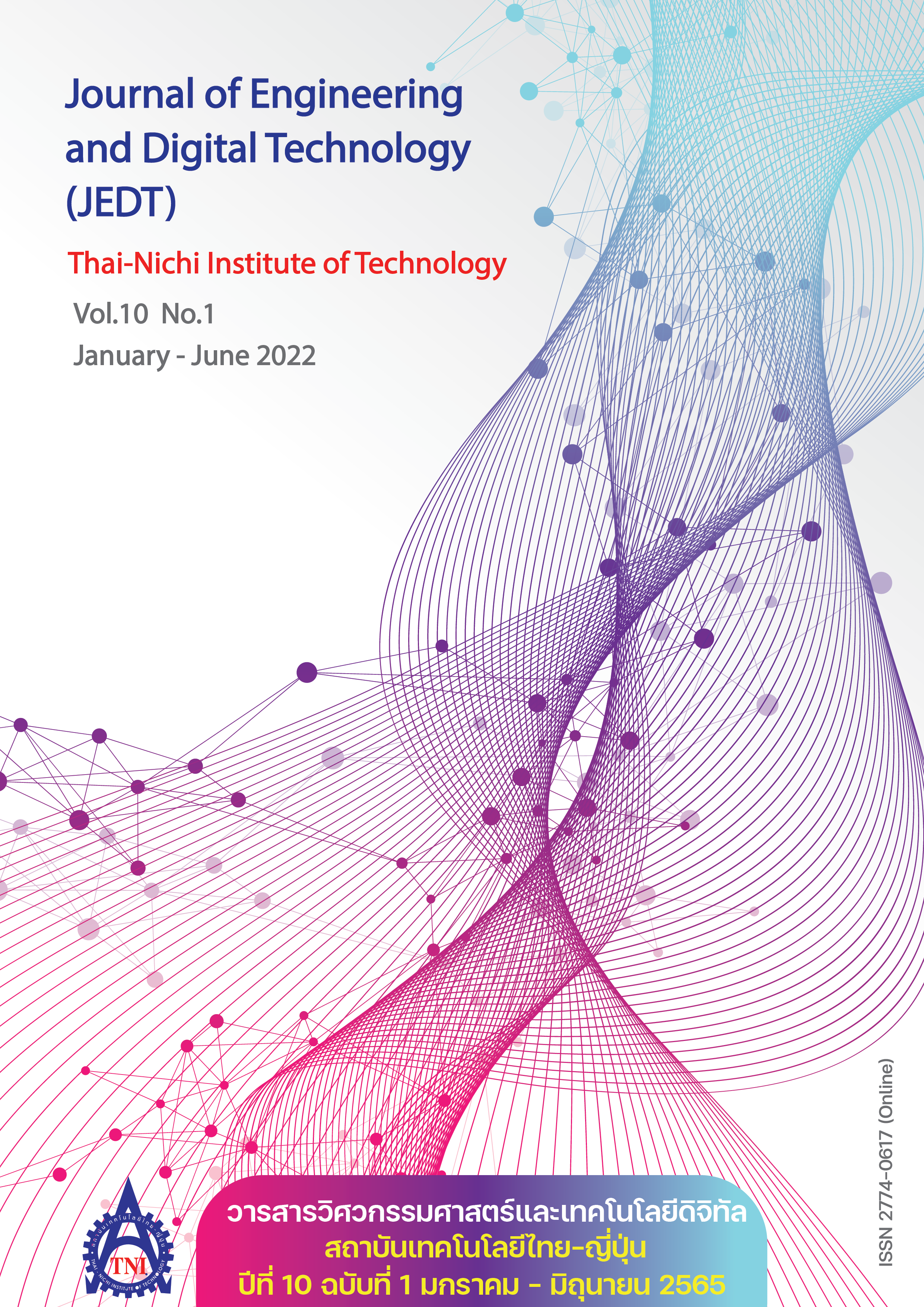An Innovative Virtual Kitchen Partnership-as-a-Service to Improve Efficiency of Healthy and Hygienic Meal Delivery Service Management in Culinary Industry
Main Article Content
Abstract
During COVID-19 pandemic, many food service providers and online delivery providers have changed and partnered into new business model known as virtual kitchen partnership-as-a service providers (VKPaaS) on cloud computing with focus on demand for healthy and hygienic meals with fastest delivery service to customers in health-related isolation environment. However, due to increasing problems of inaccurate delivery services, the VKPaaS attempts to improve its search engine with AI-based technologies in cloud computing and algorithms to determine the proper healthy and hygienic meals with fastest, accurate and economical delivery service from the nearest location to customers. The objective of this study is to study factors affecting new COVID generation customers decision to choose and purchase healthy and hygienic meals that have potential impact on management on efficiency of VKPaaS delivery service in health-related isolation environment. The quantitative survey and qualitative in-depth interview methods were used to collect and analyze data from 554 subjects and 18 food service providers in Thailand, China and USA during 3 months in 2020. The findings suggested a new VKPaaS efficient delivery management model for improvement and advancement of VKPaaS delivery service to new COVID generation customers with five vital variables of performance expectancy, effort expectancy, social influence, perceived trust and price that had significant impact on customers decision to choose and purchase healthy and hygienic meals from online VKPaaS providers. Recommendations for further research include state-of-the art areas of crowdsourcing, artistically design for contactless meals, robotic-mobile vehicles for live visualization service, and compliances in new emerging health-related isolation economy.
Article Details

This work is licensed under a Creative Commons Attribution-NonCommercial-NoDerivatives 4.0 International License.
Article Accepting Policy
The editorial board of Thai-Nichi Institute of Technology is pleased to receive articles from lecturers and experts in the fields of engineering and technology written in Thai or English. The academic work submitted for publication must not be published in any other publication before and must not be under consideration of other journal submissions. Therefore, those interested in participating in the dissemination of work and knowledge can submit their article to the editorial board for further submission to the screening committee to consider publishing in the journal. The articles that can be published include solely research articles. Interested persons can prepare their articles by reviewing recommendations for article authors.
Copyright infringement is solely the responsibility of the author(s) of the article. Articles that have been published must be screened and reviewed for quality from qualified experts approved by the editorial board.
The text that appears within each article published in this research journal is a personal opinion of each author, nothing related to Thai-Nichi Institute of Technology, and other faculty members in the institution in any way. Responsibilities and accuracy for the content of each article are owned by each author. If there is any mistake, each author will be responsible for his/her own article(s).
The editorial board reserves the right not to bring any content, views or comments of articles in the Journal of Thai-Nichi Institute of Technology to publish before receiving permission from the authorized author(s) in writing. The published work is the copyright of the Journal of Thai-Nichi Institute of Technology.
References
GDI Gottlieb Duttweiler Institute. “The food service of tomorrow: eight delivery models.” GDI.ch. https://www.gdi.ch/en/publications/trend-updates/the-food-service-of-tomorrow-eight-delivery-models (accessed Feb. 15, 2022).
“Virtual Kitchen Market: Global Industry Analysis and Forecast (2021-2027) Size, Trends, Dynamics, Component, Segmentation, and Region,” Maximize Market Research Pvt. Ltd., Pune, India, Rep. 66705, Jul. 2020. Accessed: Mar. 5, 2021. [Online]. Available: https://www.maximizemarketresearch.com/market-report/global-virtual-kitchen-market/66705/#details
P. Kaur, A. Dhir, S. Talwar, and K. Ghuman, “The value proposition of food delivery apps from the perspective of theory of consumption value,” Int. J. Contemp. Hosp. Manag., vol. 33, no. 4, pp. 1129–1159, 2021.
M. McFarland and C. Mossburg. “Thieves in LA are looting freight trains filled with packages from UPS, FedEx and Amazon.” EDITION.CNN.com. https://edition.cnn.com/2022/01/14/economy/la-freight-railroad-theft/index.html (accessed Feb. 15, 2022).
J. Marston. “Spoon Market Map: Ghost Kitchens in 2019.” THESPOON.tech. https://thespoon.tech/market-map-ghost-kitchens-in-2019/ (accessed Feb. 5, 2022).
C. Muangmee, S. Kot, N. Meekaewkunchorn, N. Kassakorn, and B. Khalid, “Factors determining the behavioral intention of using food delivery apps during COVID-19 pandemics,” J. Theor. Appl. Electron. Commer. Res., vol. 16, no. 5, pp. 1297–1310, Apr. 2021, doi: 10.3390/jtaer16050073.
W. J. Stevenson, Operation Management, 13th ed. New York, NY, USA: McGraw-Hill, 2018, ch. 8, pp. 338–363.
J. D. Nunnally, Psychometric Theory, 2nd ed. New York, NY, USA: McGraw-Hill, 1978, pp. 45–87.
E. Bailyn. “The 2021 Google Algorithm Ranking Factors.” LINKEDIN.com. https://www.linkedin.com/pulse/2021-google-algorithm-ranking-factors-evan-bailyn (accessed Dec. 20, 2021).
J. N. Sheth, B. I. Newman, and B. L. Gross, “Why we buy what we buy: A theory of consumption values,” J. Bus. Res., vol. 22, no. 2, pp. 159–170, Mar. 1991.


